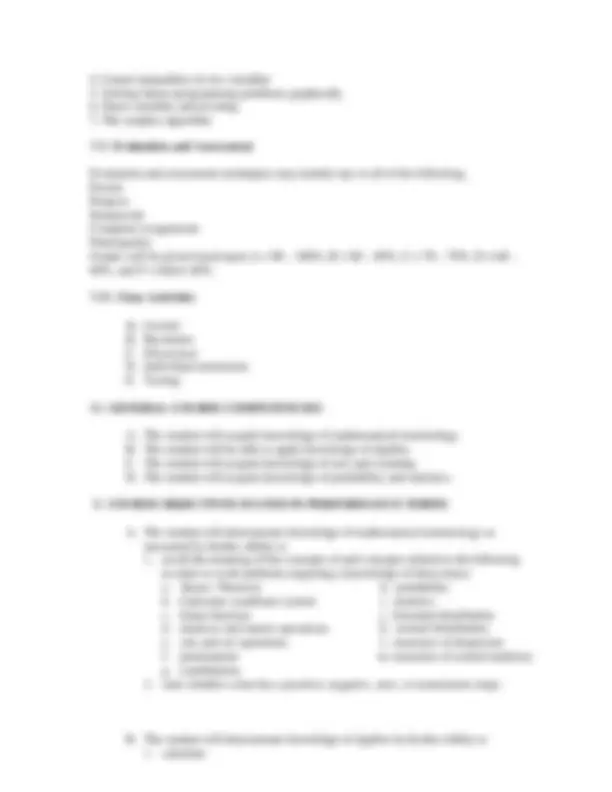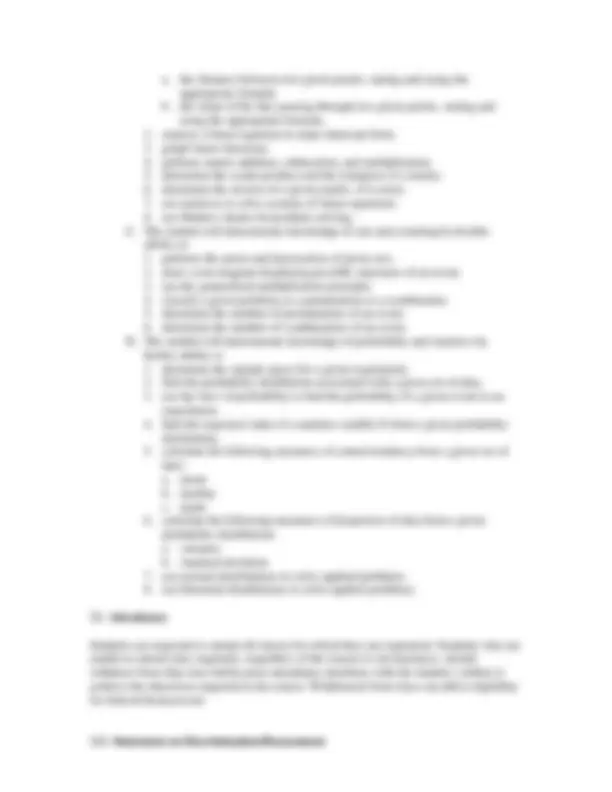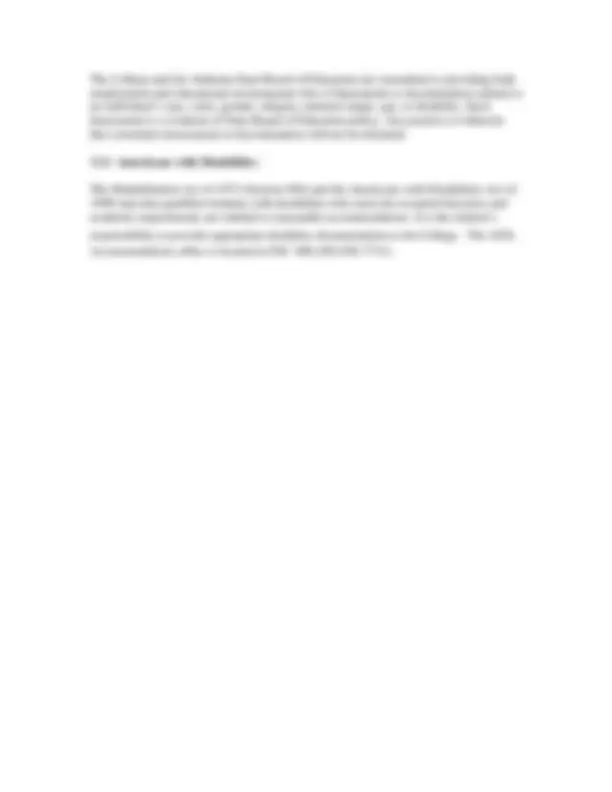





Study with the several resources on Docsity

Earn points by helping other students or get them with a premium plan


Prepare for your exams
Study with the several resources on Docsity

Earn points to download
Earn points by helping other students or get them with a premium plan
Community
Ask the community for help and clear up your study doubts
Discover the best universities in your country according to Docsity users
Free resources
Download our free guides on studying techniques, anxiety management strategies, and thesis advice from Docsity tutors
An outline of the finite mathematics course offered by jefferson state community college. The course is intended for students who are not majoring in science, engineering, commerce, or mathematics and covers topics such as sets, counting, permutations, combinations, probability, statistics, matrices, and markov chains. Course objectives, prerequisites, textbook information, and a list of topics to be covered. The evaluation and assessment techniques include exams, projects, homework, computer assignments, and participation.
Typology: Study notes
1 / 5

This page cannot be seen from the preview
Don't miss anything!




Date Adopted 1998 Dates reviewed 2007 Dates revised 2004, 2008
Jefferson State Community College
Finite Mathematics
I. MTH 110 Finite Mathematics - 3 Semester Hours
Core Area III, Code A
II. Course Description
This course is intended to give an overview of topics in finite mathematics together with their applications, and is taken primarily by students who are not majoring in science, engineering, commerce, or mathematics (i.e. students who are not required to take Calculus). This course will draw on and significantly enhance the student’s arithmetic and algebraic skills. The course includes sets, counting, permutations, combinations, basic probability (including Baye’s Theorem) and introduction to statistics (including work with Binomial Distributions and Normal Distributions), matrices and their applications to Markov chains and decision theory. Additional topics may include symbolic logic, linear models, linear programming, the simplex method and applications.
III. Prerequisite
All core mathematics courses in Alabama must have as a minimum prerequisite high school Algebra I, Geometry, and Algebra II with an appropriate mathematics placement score. An alternative to this is that the student should successfully pass with a C or higher in Intermediate College Algebra.
IV. Textbook
Finite Mathematics, For the Managerial, Life, and Social Sciences, Tan 8th^ Ed. Thomson Brooks/Cole, 2006.
V. Course Objectives
The objective of this course is to provide the non-calculus mathematics needed for students in many disciplines. This course shows through applications the relevance of mathematics to both real life and future courses in many disciplines. It also provides a general mathematics background for students who need a terminal core mathematics course. The student will develop an understanding of the concepts, develop competent skills, and demonstrate applications in the following areas.
VI. Course Outline of Topics
A. This course shall include the following topics as a minimum.
a. the distance between two given points, stating and using the appropriate formula b. the slope of the line passing through two given points, stating and using the appropriate formula.
XI. Attendance
Students are expected to attend all classes for which they are registered. Students who are unable to attend class regularly, regardless of the reason or circumstance, should withdraw from that class before poor attendance interferes with the student’s ability to achieve the objectives required in the course. Withdrawal from class can affect eligibility for federal financial aid.
XII. Statement on Discrimination/Harassment
The College and the Alabama State Board of Education are committed to providing both employment and educational environments free of harassment or discrimination related to an individual’s race, color, gender, religion, national origin, age, or disability. Such harassment is a violation of State Board of Education policy. Any practice or behavior that constitutes harassment or discrimination will not be tolerated.
XIII. Americans with Disabilities
The Rehabilitation Act of 1973 (Section 504) and the Americans with Disabilities Act of 1990 state that qualified students with disabilities who meet the essential functions and academic requirements are entitled to reasonable accommodations. It is the student’s
responsibility to provide appropriate disability documentation to the College. The ADA
Accommodations office is located in FSC 300 (205-856-7731).